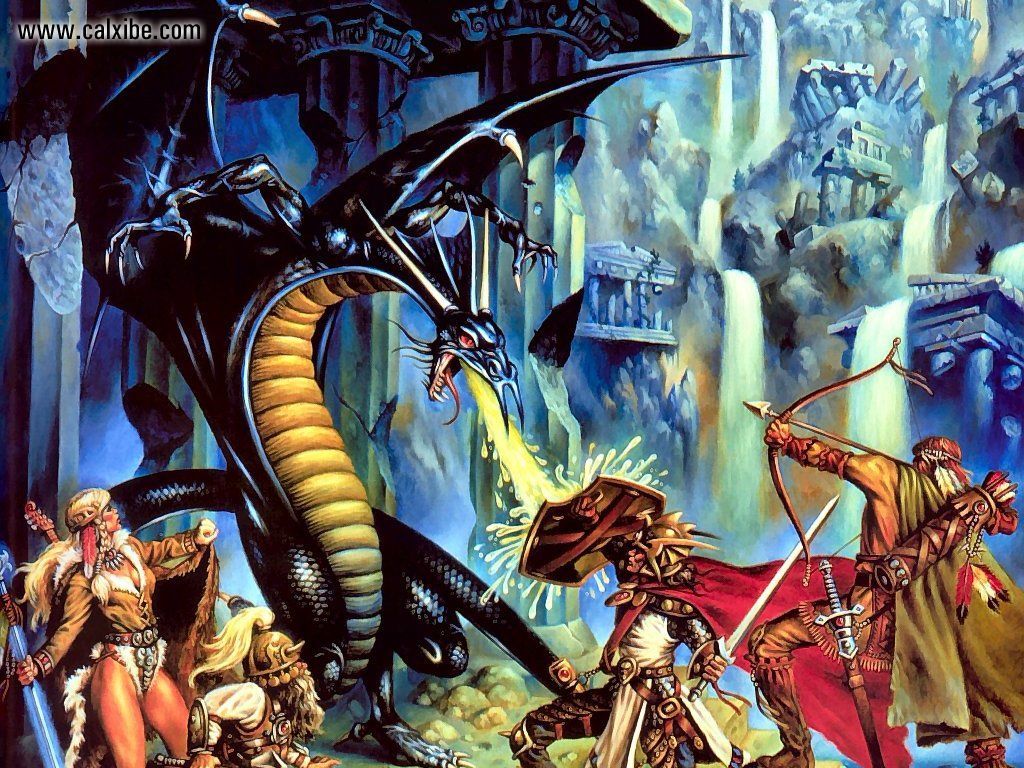
As part of this series wherein I examine the best of other people's game settings and see which elements I want to include into Tyrants of Saggakar (ToS). This time lets have a look at DragonLance, one of the oldest settings out there.
Let me preface this stating that one of my personal favorite settings is DragonLance. From the outset, the world was different from many of the others.
First, it was presented to us through the eyes of a group of PCs. Through their adventures, we got to know Krynn. As such, they only worry about the immediate threats and the world immediately around them. Until later, do they begin to see things in a wider scope. And even then, though they lead armies, their concerns are fairly immediate.
Next, the world was set on the verge of final collapse into darkness, with only a few heroes standing up and rising to save the world. It made the world into the first heroic fantasy setting (for D&D). To this day there is a feeling that in DL, players are called to become bigger than they are, to become more important. True, this is part of all campaigns, but DL, to me, has it in its DNA more than others. The stories and plots led themselves to it.
Next, we were introduced to new races that were not the typical Tolkienesque fair. Okay they were. But they also had some twists to them: did I say Kender? Minotaurs? Irda? Gully dwarves? The gully dwarves sucked in the books and they were terrible in the game too. However, the amount of comedic relief they poured out was quite interesting.
Trailing on the previous, our villains were not orcs and goblins. No here we had wizards priests dragons and hordes of draconians. New goodies to tackle! The villains had a deeper backstory that drove their motivations. One could say that DL, more than any other setting was about motivations. And most of the villains' motivations were understandable and reasonable: they sought power, revenge, or riches. They did not seek "magical items" type of motivation.
The original hardback also added a few new classes such as the Solamnic Knights. These were indeed fun and flavorful classes to play. I would go so far as to say they were precursors of 3e' multiclassing system. The progression of Knight of the Crown to Knight of the Sword to Knight of the Rose was one that required a player to really focus on what they wanted to do. Definitely one of the elements of 3e I enjoyed most of all.
DragonLance is a small world especially when compared to Forgotten Realms or even Greyhawk. It seems there are much fewer nations, cities and locations. However, this is not a weakness here. Why? Because we got to know and use these locations over and over. I never felt overly constrained when GMing or playing in DL, in spite of this size issue.
No. Taladas does not count.
Finally, DragonLance is about a storyline. Setting a campaign there requires the GM to specify when you are and what are the effects on the game. For example, the early Chronicles do not have clerics casting spells. Or the reign of the King-Priest of Istar where good dominated the world. Obviously this is something that talks to me directly as I been a strong proponent and supporter of storyline in game settings.
Those are the high points of the setting. True, it does count as one of my biggest campaign fails, but still I like it.
So what do I like from DragonLance in ToS? Though perhaps a little too manichean for my taste, it was the best we had early on. I have grown more accustomed to shades of grey in settings. Alignment is not a reason, it is a measure of personal morals and ethics. The grey in Greyhawk, if you will.
One of the big things I want in ToS is the motivations of the villains. They should be understandable, relatable, and either supportable or opposable. I want these NPCs to be living counterparts to the PCs.
JP

No comments:
Post a Comment